The smallholding at the bottom of Smithy Lane known as Eastlands came to prominence after the 1918 sale of the various village properties. It was at the northern edge of what was then the built-up part of the village, wrapping around to the Newham Lane area (which was largely farmland right from the Rectory to the river – it was lot 29 in the sale, marked in pink on the map below.
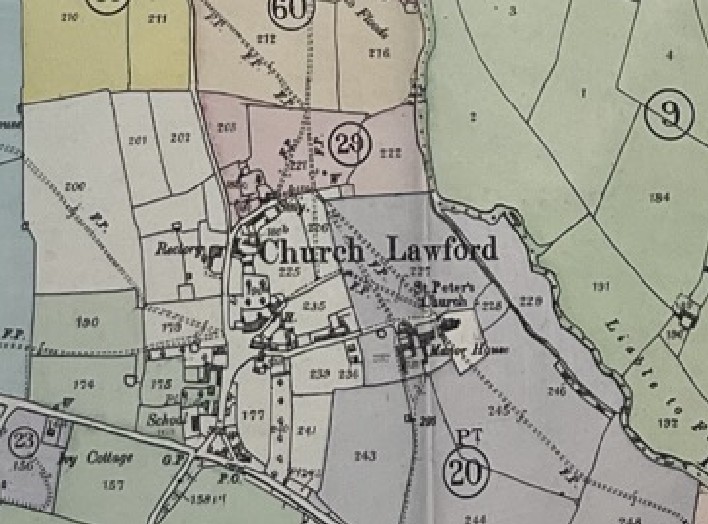
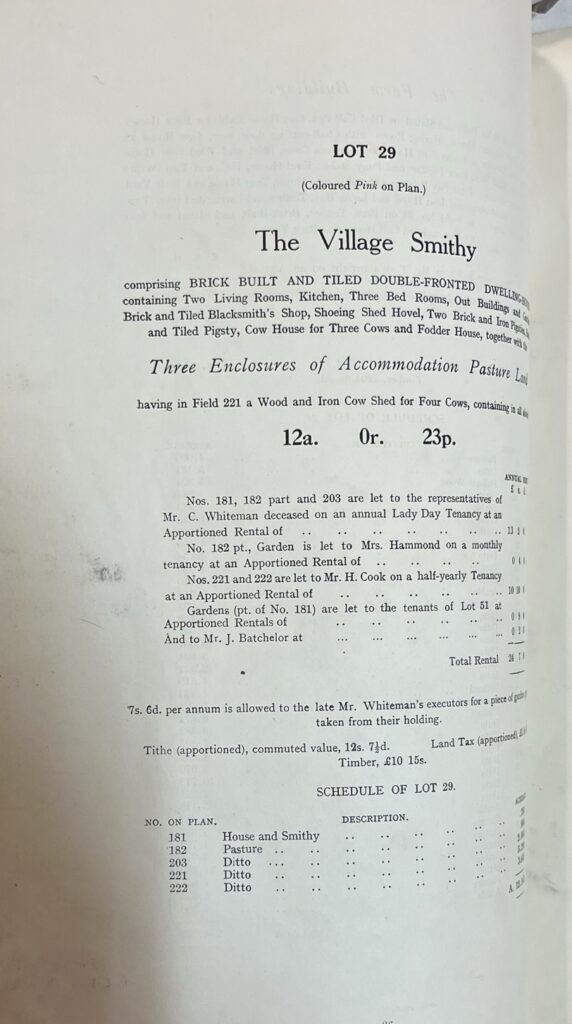
Prior to the auction the Smithy had been operated by the Bird family for the first half of the 19th Century, followed by Charles Whiteman (one of several branches of the Whiteman family from Dunchurch and Bilton that moved to the village) from around 1860 onwards. Charles ran a Blacksmiths business in both Church Lawford and Wolston, having previous been involved with the smithy in Bilton, which remained in the family. He had given an apprenticeship to Alf Day early in the 20th Century – Alf went on to become the village blacksmith operating from a Smithy in School Street. Charles Whiteman passed away in 1916 while Alf was away at war, but his son Gilbert Whiteman took over the reins at Eastlands until the 1918 sale.
Following the 1918 sale the smallholding was sold on to John T Davis the following year. Mr Davis was a dairy farmer from the Rugby area. After some initial problems with transition from the sitting tenant (quite common at that time), Mr Davis took over the the farm, and Gilbert Whiteman set up a smithy towards the White Gates in Church Lane. Alf Day moved to his own Smithy in School Lane towards the end of the decade when it was clear Mr Davis intended to sell the farm which he did by 1930.
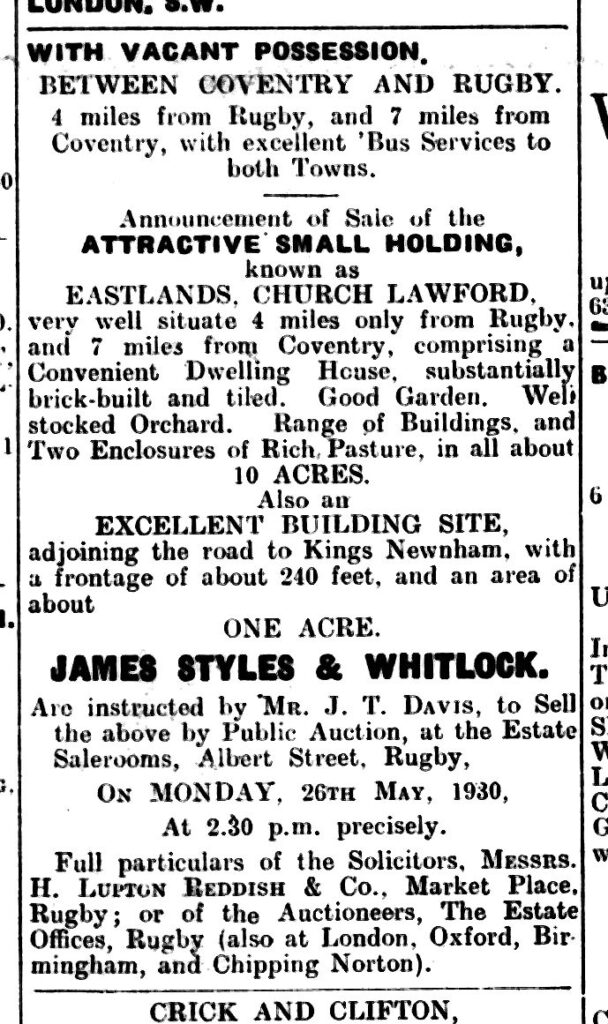
The farm was then owned by Herbert Edwards until 1947, when it was put up for sale by auction.
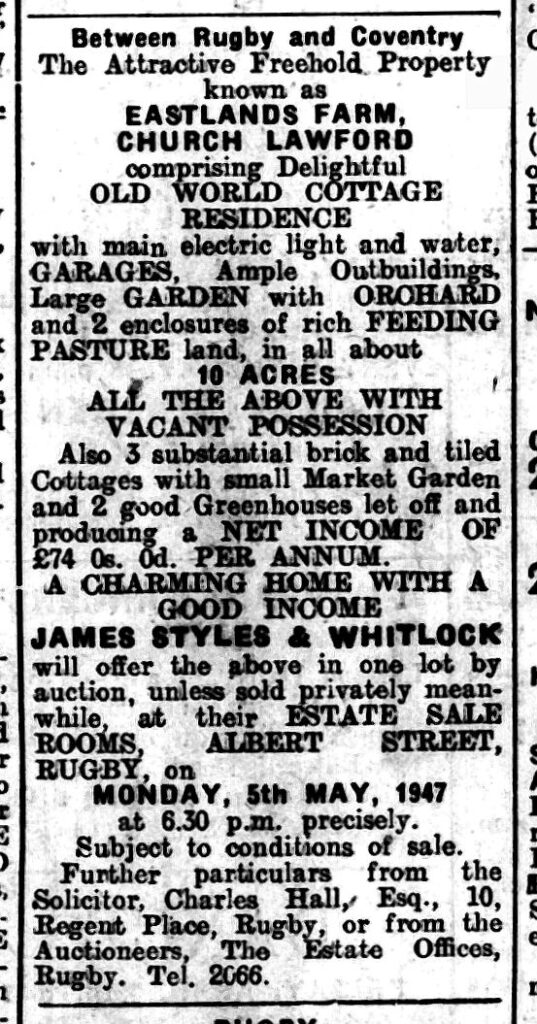
William Jarvis bought the farm in 1947 but sold it on three years later, when it was bought by Patrick Sweeney (known to everybody as Paddy Sweeney). Mr Sweeney sold off some of the land for grazing, and sold off the farm machinery and stock. The property was then known as Wheatfield.
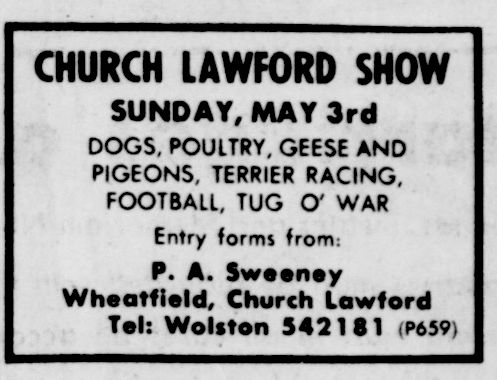
The Sweeney family quickly settled into village life, running the Village Shop and Post Office for a while. Jane Sweeney also helped with teaching at the school and organised additional caravan-based housing during the post-war housing shortage. During the 1970s and 1980s Wheatfield became a centre for many village activities. There was a village show, featuring greyhound races, chances for Donkey Rides, etc. The field was laid out as a football pitch too, and the village bonfire was held there. The Sweeney family was active in local politics, and the Veterinary practice was well regarded throughout the county (and beyond). The advertisement here is from the Rugby Advertiser of April 1981.
